A Comprehensive Guide on Winter String Light Care
Eternal Twinkle: The Dilemma of Winter String Lights
The debate over whether or not to take down string lights in winter is one that surfaces year after year. As the festive season wanes and we welcome the New Year, homeowners are faced with a predicament – should they dismantle their outdoor holiday decorations or keep them up during the frosty winter months?
This question is especially pertinent when it comes to landscape lighting, which offers not just aesthetic appeal but practical lighting during shorter daylight hours. Landscape string lights, in particular, have become an integral component of outdoor decor.
Their twinkling glow adds a touch of charm to any setting, whether it’s a suburban backyard or an urban balcony. With the ever-increasing range of designs and styles available on the market, these decorative lights can transform any ordinary space into an enchanting nighttime spectacle.
Unraveling the Importance of Landscape Lighting
The relevance of this topic extends beyond simple aesthetics. Landscape lighting is a key element in creating a safe and welcoming environment around our homes. It brightens paths and driveways during dark winter nights, safeguarding against potential accidents while providing an added sense of security.
Landscape string lights can also accentuate architectural features and garden elements after dusk, thereby enhancing the property’s visual appeal even during off-holiday seasons. Moreover, outdoor lighting has far-reaching implications for social activities too.
Properly lit exteriors can accommodate nighttime gatherings and celebrations throughout the year. To add to this, many people find that maintaining their string lights post-holidays helps combat post-holiday blues by retaining some festive cheer amidst bleak winter months.
A Burning Question: To Dismantle or Not To Dismantle?
This then brings us back to our central question: should we, or should we not, take down string lights in the winter months? The pros and cons of each choice need to be considered, factoring in aspects such as weather conditions, type of string lights used, safety considerations, and energy consumption.
The decision not only impacts the aesthetic appeal of our homes but also our enjoyment of outdoor spaces during winter. Thus, as we delve into this topic further over the course of this post, it becomes clear that the matter is far more complex than it initially seems. By dissecting each element associated with keeping or removing landscape string lights in winter, we aim to shine a light on this often-debated subject and help homeowners make an informed decision.
Understanding String Lights
A Glimmer in the Dark: Defining String Lights
String lights, fondly known as fairy or twinkle lights, are a series of light bulbs interconnected by a length of wire. These luminous chains can bestow upon any exterior or interior an aesthetic appeal and an inviting aura.
The magic of string lights lies in their versatility; they can be wrapped around trees, strewn along fences, draped over mantels or balconies, or even delicately hung on walls to create memorable atmospheres. The very essence of these lights is to punctuate the darkness with specks of soft light.
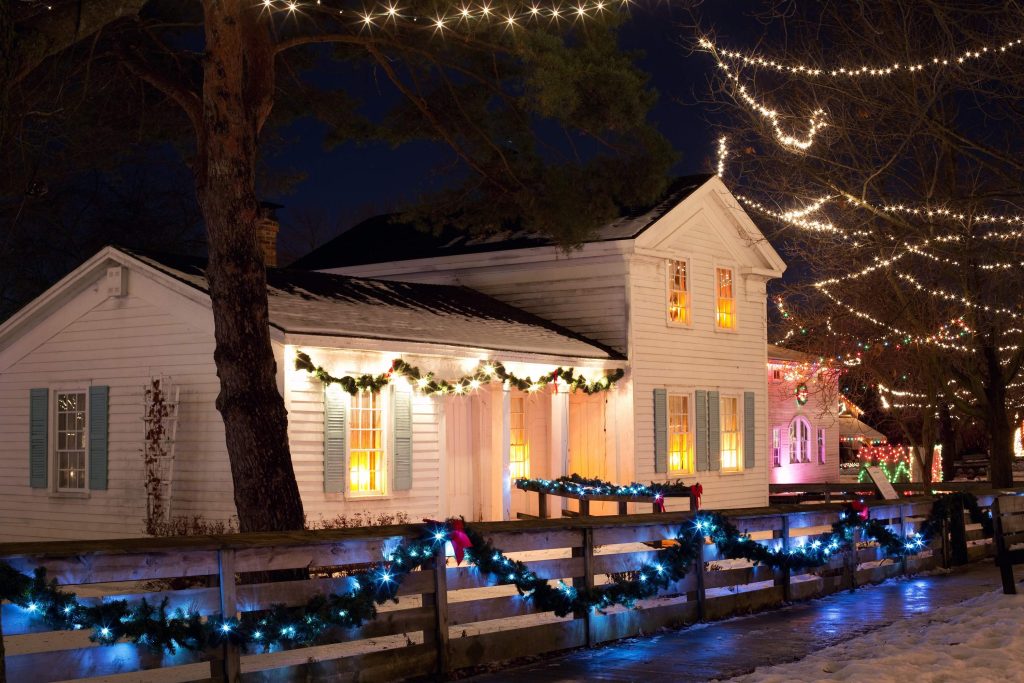
They come in varying shapes and sizes – miniature globe lights for intimate settings, larger bulb lanterns for more pronounced clarity, or even novelty designs such as stars and hearts for themed occasions. Landscape string lights specifically are designed to enhance outdoor environments such as gardens, patios, and pathways.
Stars on a Wire: Different Types of String Lights
Diving deeper into the world of this ephemeral landscape lighting, we find that these shimmering strings come in various types. Incandescent string lights are classic; they have a warm glow that gives off nostalgic charm reminiscent of olden times. However, incandescent bulbs consume more electricity and produce more heat than their modern counterparts.
Enter LED string lights – energy-efficient champions that offer sharp brilliance coupled with longevity. With lower heat production and higher resistance to weather conditions, they shine brightly among their peers as a suitable choice for exterior applications. Solar-powered LED variants also exist, which charge during the day to glow untethered at night – an elegant solution marrying sustainability with aesthetics.
For those seeking something unique and vibrant, there are RGB LED string lights offering dynamic color-changing capabilities driven by remote controls or smartphone apps. At last but not least, there are vintage Edison-style bulb strings, lending an industrial-chic vibe to any setting.
Festive Flickers: Common Usage During Holidays
String lights have become synonymous with holiday decorations around the globe. As the year winds down and festivities commence, they are unwrapped from their boxes to adorn homes with a joyful glow. Landscape string lights play a major role in this process, transforming stark winter gardens into enchanting wonderlands.
During Christmas especially, their popularity skyrockets as they find themselves wrapped around Christmas trees, lining rooftops, or even used to create radiant outdoor displays depicting Santa Claus or snowmen. Halloween also sees them being used creatively as part of spooky yard displays where orange and purple bulbs take center stage.
Outside of these specific holidays, string lights are used extensively in other celebrations such as weddings, birthday parties, or summer barbecues to add warmth and enchantment. Their versatility and charm make them a perennial favorite for adding joy to our lives.
The Luminous Appeal of Winter: Beauty and Brightness added by String Lights
When a blanket of snow covers the ground, landscape string lights can bring an enchanting charm to the winter landscape. Their brilliant glow set against the crisp white snow creates a picture-perfect scene reminiscent of a holiday postcard.
During early sunsets and cloudy days, these spectacular highlights add much-needed brightness to otherwise dull afternoons. Moreover, string lights arranged to outline architectural elements or highlight particular features in your yard lend an artistic flair to the property.
Imagine seeing frost-touched trees glowing with small flickering bulbs or your patio adorned with twinkling lights like stars brought down from the inky night sky. The versatility of landscape lighting comes in various colors and designs, which allows homeowners to customize their outdoor aesthetics per individual preferences and season-specific themes.
This attribute opens up limitless possibilities for creating a magical winter wonderland right at home. A carefully curated setting featuring landscape string lights not only enhances one’s personal space but also imparts vibrancy to the entire neighborhood, producing an inviting ambiance that fosters community spirit during the chilly season.
Fighting Darkness with Delight: String Lights as Winter’s Essential Lighting Solution
During winter months when daylight hours decrease significantly, having additional sources of light becomes crucial. As natural light is limited, landscape lighting can serve beyond mere decoration; it provides functional benefits by increasing visibility around your home. Installing string lights along walkways or driveway edges helps define paths during heavy snowfall when boundaries can be easily obscured.
This added lighting promotes safety – reducing risks such as slips or falls during icy conditions. More than a practical solution, these warm, radiating bulbs offer comfort amidst winter’s bleak atmosphere; they act as beacons guiding us safely home through cold, dark nights – a reassurance warmly welcomed in such frigid times.
Brightening Spirits: The Festive Atmosphere Brought by String Lights
The winter season coincides with several holidays, making it a time for festive decorations. With their sparkling appeal, string lights are synonymous with holiday cheer and celebratory moods. Maintaining these decorative lights throughout the winter keeps the festive atmosphere alive, bringing joy and light-heartedness during a time when many could use some uplifting due to the season’s often gloomy weather.
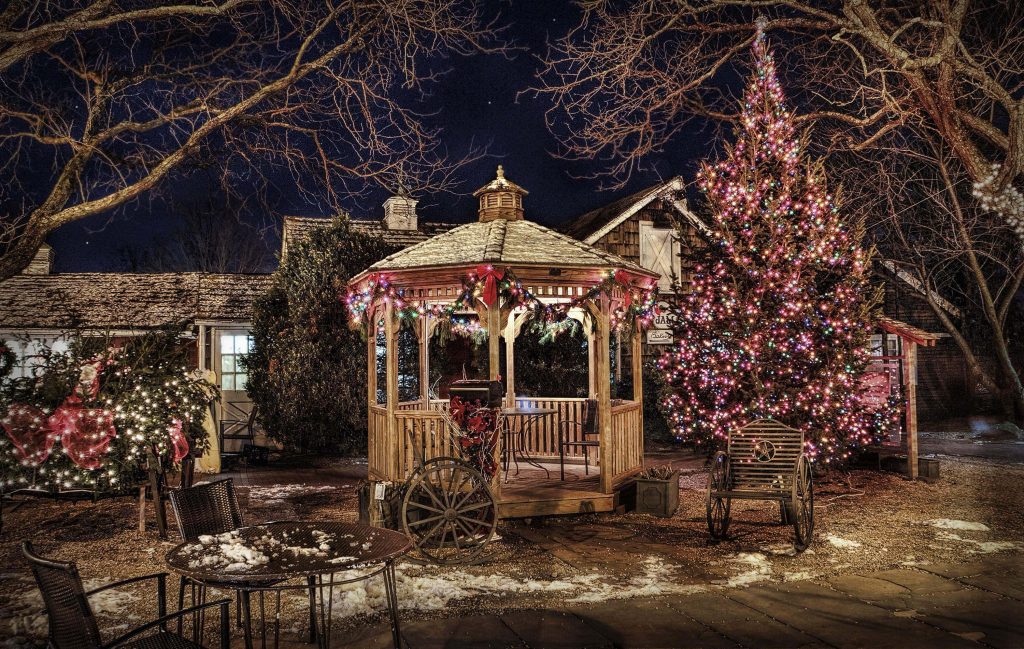
Furthermore, landscape lighting can take on creative expressions during various celebrations. For instance, colored string lights can morph your yard into a playful spectacle for Valentine’s Day or create a festive mood for an outdoor winter party.
Case Studies: Let There Be Light, All Winter Long
There are numerous examples where homeowners have benefited from keeping their string lights up all winter. In Sweden – a country known for its long nights in winter – residents commonly keep their Christmas lights until February to combat the darkness and enhance their snow-laden landscapes.
In another instance, an elderly couple residing in Alaska used solar-powered landscape lighting to illuminate their walkways during winter months. This addition not only enhanced their home’s beauty but also minimized risks associated with limited visibility due to early sunsets.
These examples reflect how keeping string lights up throughout the winters is not merely a matter of aesthetics; it also serves practical purposes and contributes positively towards mental wellness by counteracting seasonal gloominess.
Drawbacks of Leaving String Lights Up in Winter
The Detriments of Weather Conditions: A Closer Look
Leaving string lights up during winter may seem like a picturesque idea, and indeed, landscape string lights can add a twinkling charm to the otherwise bleak panorama. However, one must consider the potential damage due to harsh weather conditions. The frigid temperatures that define winter can be particularly detrimental to your beloved string lights.
Low temperatures can cause the plastic components of these lights to become brittle, thus leading to breakage. Furthermore, winter storms that bring heavy snowfall and ice are common occurrences in many areas. The accumulation of ice on landscape lighting can strain the wires and potentially result in breaks or tears. Winds exacerbated by a storm may also cause physical harm as they whip against the vulnerable bulbs.
Beyond Aesthetics: The Price of Beauty
Besides physical damage, leaving string lights up throughout winter invariably results in an increase in energy consumption. It’s important to remember that while we romanticize these glowing orbs scattered across our landscapes as whimsical fairy lights, they are essentially electrical appliances that draw power for their operation.
Often ignored is the fact that when temperatures plummet during winters, more energy is needed to light up these bulbs brightly enough to be seen through dense fog or snowfall. This increased energy usage not only leads to an inflated electricity bill but also puts additional demands on power grids and contributes negatively towards energy conservation efforts.
Undermining Safety: Risks Lurking Within
The concept of safety is another vital aspect that cannot be overlooked while discussing drawbacks associated with keeping string lights up during winters. These enchanting lighting chains come with their own set of risks – fire hazards being one of them. According to statistics from Electrical Safety Foundation International (ESFI), December sees the highest rate of home electrical fires.
Part of this increase can be attributed to the widespread use of outdoor string lights during winter and failure to take them down post-holidays. Extension cords exposed to snow and ice, if not properly insulated, may short-circuit, leading to a potential fire hazard.
Case Studies: Real-Life Tales of Caution
In 2016, a family in Vermont came home from a holiday party only to find their house ablaze. On investigation, it was discovered that the cause of this unfortunate incident was an electrical malfunction in the outdoor string lights that were left up post-Christmas.
In another instance from Minnesota in 2018, an entire row of landscape lighting installed on fences got irreparably damaged due to heavy snowfall. The homeowners had spent considerable resources on these landscape string lights only for them to be destroyed by inclement weather.
These instances serve as sobering reminders that while it may seem tempting to enjoy the warm glow provided by landscape string lights all winter long, there are significant drawbacks associated with leaving them up throughout the season.
Understanding the Impact of Weather Conditions on String Lights
When contemplating whether to leave landscape string lights up during winter, it is crucial to understand the impact that different weather conditions can have on these decorative elements. Snow, ice, wind, and freezing temperatures present a variety of challenges that can affect both the longevity and functionality of string lights.
The effects can range from minor inconveniences such as dimmed lights or flickering bulbs to dramatic failures leading to entire sections or strands failing. Snow accumulation on landscape lighting creates a picturesque winter scene; however, it poses potential risks. Prolonged exposure to snow’s weight and dampness often leads to bulb damage or breakage. More than that, if snow melts and refreezes within the light fixtures themselves, it may cause irreparable harm.
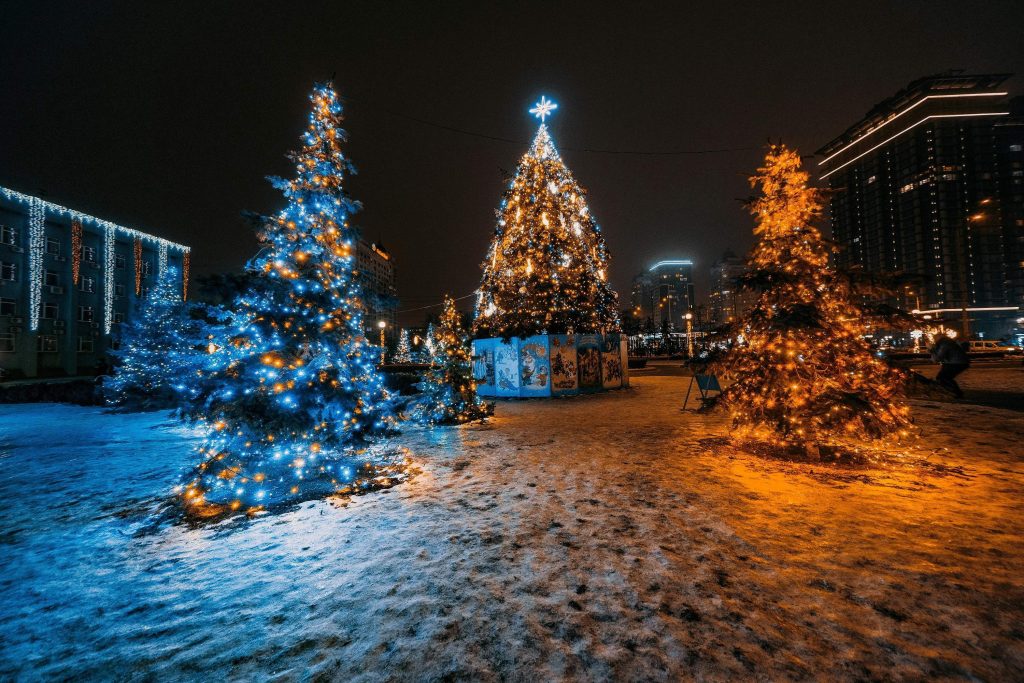
Ice presents another hazard for landscape string lights. Encasement in ice not only adds weight but also exposes the electrical components within your lighting system to moisture over an extended period. The brittle nature of ice means it can cause physical harm when thawing as well; sharp edges may cut into any exposed or weakened wire insulation.
Winter winds are an unpredictable element that could lead to detangling nightmares or more serious damage. Strong gusts have been known to bring down entire sections of lighting when not securely fastened while causing strain on electrical connections with their constant tugging motion.
Freezing temperatures are perhaps one of the most insidious threats posed by winter weather conditions. They can cause materials used in landscape lighting, such as plastic and certain types of metal, including those that form lightbulbs and connections, to contract significantly, which could lead to cracks forming over time or make them more susceptible to breaking under stress.
Evaluating String Light Resilience: LED vs Incandescent Bulbs
Understanding the resilience of different types of string light bulbs, especially LED and incandescent, can also be vital in determining whether to leave them up during winter. Both types have their unique strengths and weaknesses when exposed to harsh weather conditions.
Light-emitting diode lights are a popular choice for landscape lighting due to their energy efficiency and their longevity. However, what truly sets them apart when it comes to resilience in winter weather is their ability to perform well in low temperatures. Unlike many other light types, LEDs become more efficient as the temperature drops, making them an excellent choice for winter use.
In contrast, incandescent bulbs tend to struggle under freezing conditions. The filament inside an incandescent bulb is already under strain when producing light; add the stress of cold temperatures, and the lifespan of these bulbs can be seriously curtailed. Moreover, the glass used in incandescent bulbs is often thinner than that used in LEDs, which can make it more susceptible to damage caused by ice or wind-blown debris.
However, no type of string light is invulnerable to all severe weather conditions. For instance, while LED lights may function better than incandescent ones in low temperatures, they are still just as susceptible to physical damage caused by heavy snowfall or strong winds if not properly secured.
Both LED and incandescent landscape string lights have varying degrees of robustness against different winter weather conditions. Therefore, prudent care during installation coupled with regular maintenance checks could significantly increase your chances of enjoying trouble-free operation throughout the season, irrespective of your chosen bulb type.
Tips for Safely Leaving Landscape String Lights Up in Winter
Choosing Weather-Resistant String Lights for Your Landscape
The first step towards ensuring your string lights withstand the winter is to carefully select weather-resistant models. These lights are specifically designed to endure elements like wind, snow, and freezing temperatures.
Many modern string lights come with an ingress protection (IP) rating that categorizes their level of protection against dust and water. For instance, a set of landscape string lights with an IP rating of 65 will be dust-tight and can resist water jets.
Besides the IP rating, also check for temperature resistance. LEDs are often prized for their ability to function efficiently in cold temperatures. Similarly, look for corrosion-resistant materials such as stainless steel or copper, which are less likely to rust under winter’s onslaught of snow and rain.
Ensure that the cables used are thick enough to prevent breakage due to cold brittleness. Your choice of landscape lighting could also depend on where you live; someone residing in a milder climate might find certain types of lights more suitable than those living in areas experiencing severe winters.
All these factors can play a crucial role in determining the resilience and longevity of your landscape lighting during winter months. To obtain optimal results, it may be best to consult a local landscape lighting expert who better understands regional climate patterns and can recommend suitable products accordingly.
Proper Installation: A Preemptive Strike Against Winter Damage
Even high-quality, weather-resistant string lights cannot perform optimally if installed improperly. Proper installation starts with selecting appropriate fixtures that securely hold your string lights while minimizing damage from wintry blasts.
It is important not only to secure the light strands themselves but also any extension cords or power strips to prevent them from being exposed to the elements. Employing various methods like using clips instead of nails to affix lights or burying cords underground can provide added protection.
Landscape lighting should ideally be installed in sheltered areas where they’re less likely to encounter heavy snowfall or strong winds. If this is not possible, consider angling the lights in a way that prevents accumulation of snow or ice on the bulbs.
Additionally, make it a point to keep all electrical connections off the ground and away from puddles; water and electricity are a dangerous mix. To guarantee safe and secure installation, consider hiring professionals who specialize in landscape string light installation.
Maintain Regularly: An Ounce of Prevention
No matter how robust your landscape string lights are, regular maintenance checks are essential for their effective functioning during winter. Look out for any signs of wear and tear, such as frayed wires or cracked bulbs, which could cause electrical shorts when exposed to moisture.
Cleaning your landscape lighting is also an important part of maintenance. Over time, dust and grime can accumulate on the surface of lights, causing them to dim. Wiping them down with a soft cloth occasionally ensures that they continue illuminating brightly throughout the season.
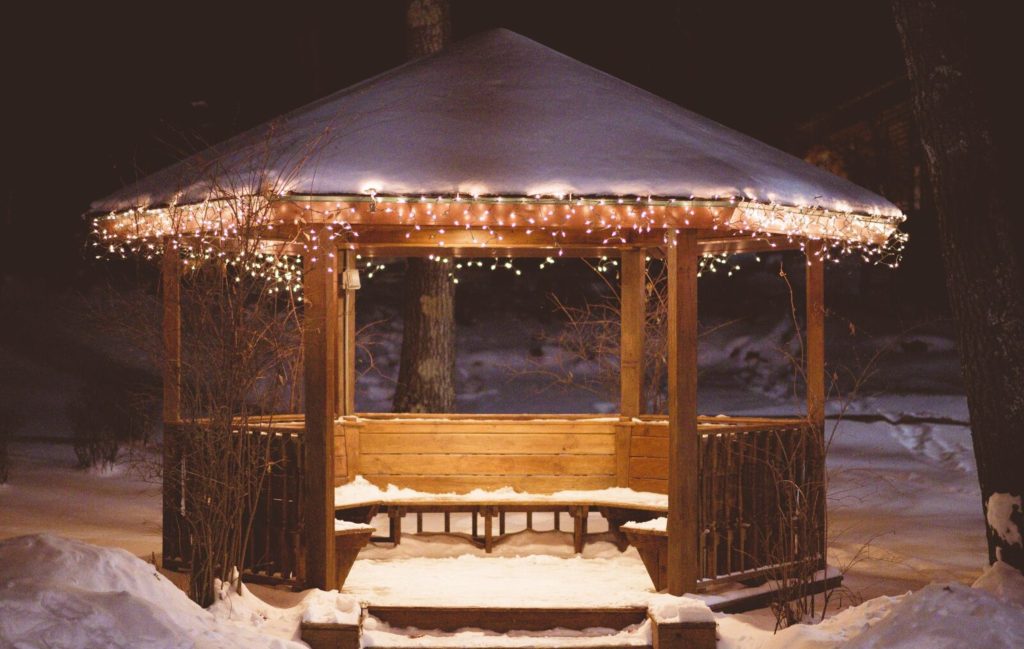
Moreover, after every bout of extreme weather like heavy snowfall or freezing rain, inspect your landscape string lights for damage. Remove any accumulated ice delicately so as not to break the bulbs or strain the wires.
In case you find any damaged parts during these inspections, replace them immediately rather than waiting till all strands stop working; sometimes one faulty bulb can cause an entire system failure if left unattended. Remember that regular preventative maintenance not only saves energy but also extends the lifespan of your landscape lighting system.
Saving Energy with Timers and Energy-Efficient Bulbs
Leaving string lights on all winter can increase energy consumption. However, employing timers can help regulate power usage by ensuring the lights are on only during required hours. Besides reducing your electricity bill, timers also add a layer of security, making your home appear occupied even when it isn’t.
Opting for energy-efficient bulbs such as LEDs is another effective way to cut back on power consumption. Not only do they use less electricity than traditional incandescent bulbs, but they also emit a brighter light, providing better lighting in the gloomy winter months.
LEDs have the added advantage of lasting much longer than their conventional counterparts, which means you won’t have to replace them frequently. This long life span combined with lower energy consumption makes LEDs a cost-effective choice for landscape lighting during winters.
You may also consider using solar-powered string lights that harness sunlight during the day to light up at night. These don’t require any electrical connections and sustain themselves efficiently, especially in regions experiencing sunny winter days. Saving energy while using landscape string lights not only reduces expenditure but also contributes towards environmental conservation by decreasing carbon footprint.
Alternative Lighting: Temporary Lighting Solutions for Festive Occasions
For those who deem leaving string lights up during winter as impractical or hazardous, there are several transient yet effective lighting alternatives available. These solutions can provide the same joyful ambiance during festivities without the strings attached, so to speak.
One viable alternative is landscape lighting. Unlike traditional string lights that are often hung on rooftops or trees, landscape lighting is designed to be sturdily planted in the ground. They are equipped to withstand harsh weather conditions and can be operated using low-voltage electricity, making them safer and more energy-efficient. Their installation typically requires more effort than hanging string lights, but once in place, they require minimal maintenance.
Battery-operated LED candles are another brilliant solution for providing temporary outdoor lighting during festive occasions. These candles give off a warm glow similar to traditional string lights but without any electrical cords involved. They are weather-resistant and safe to use even in snowy conditions.
Another excellent option is solar-powered decorations such as lanterns or stake lights, which harvest daylight and convert it into energy used for illuminating your yard at night. While these might not provide light continuously throughout winter’s longer nights due to diminished sunlight, they offer a sustainable and eco-friendly way of adding light and color to your outdoors.
Consider utilizing projectors that display festive patterns or images onto your home’s exterior walls. These devices create an impressive visual feast with minimal setup required and no worries about potential damage from adverse winter weather.
Interior Warmth: Utilizing Indoor String Lights for a Similar Effect
If you’re particularly fond of the enchanting twinkle that string lights bring but would rather avoid battling with winter elements outdoors, bringing the charm inside can serve as an excellent alternative. Indoor-safe string lights provide all the aesthetic benefits of their outdoor counterparts while eliminating concerns associated with inclement weather conditions.
Draped over windows, wound around indoor plants, or above the dining room table, they can create a cozy and festive atmosphere. For those who miss the sparkle of outdoor landscape string lights when viewed from inside the house, placing indoor string lights near windows can help emulate the same effect. This setup allows for enjoying the beautiful glow without stepping into the frosty outdoors.
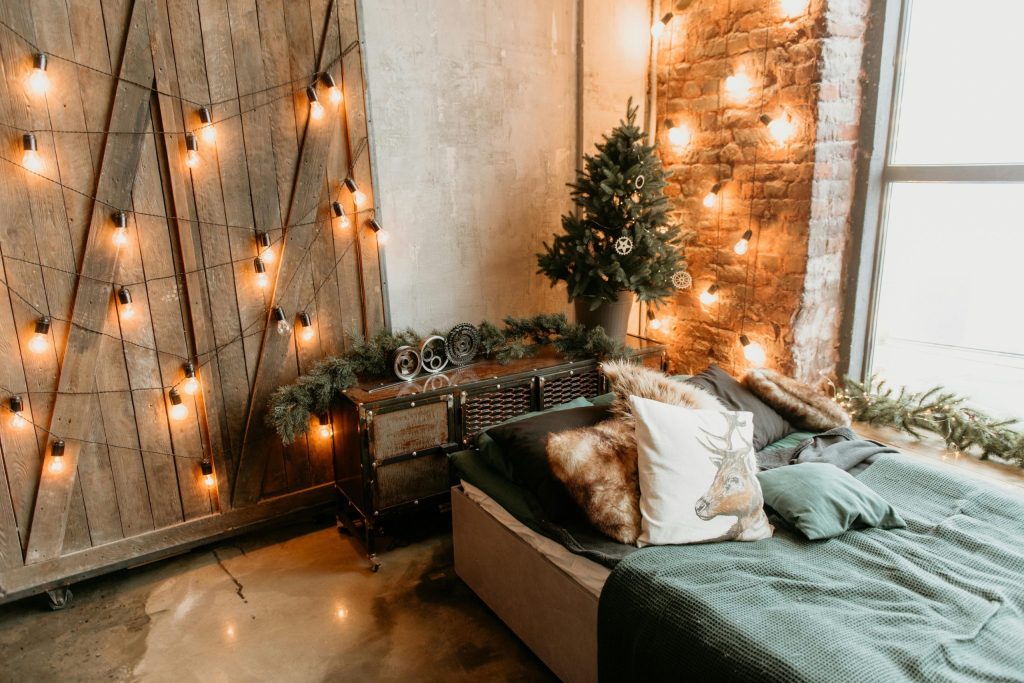
Additionally, indoor string lights are available in a variety of shapes, colors, and designs that allow for more personalized decor. One can opt for classic white bulbs for elegance or multi-colored ones for fun; tiny twinkling lights for subtlety or large globe bulbs for a bold statement.
Apart from being decorative elements, these interior string lights can serve practical purposes as well. They could be used as nightlights in bedrooms or subtle pathway lighting in hallways. The versatility and utility of indoor string lights make them an appealing alternative to leaving outdoor string lights up all winter.
Conclusion: Should We Take Down String Lights in Winter?
A Luminary Dilemma: The Decision on Landscape String Lights
As we have charted the territory of landscape string lights, we’ve ventured into their many benefits as well as their potential downsides during the winter season. On one hand, leaving these twinkling wonders up all through the frosty season can elevate a home’s aesthetic appeal and create a festive atmosphere that’s hard to resist.
They act as delicate beacons in our otherwise dim winter afternoons, and indeed, they’re a charming way to fight back against the inclement weather. However, despite their allure, keeping string lights up throughout the winter is not without its drawbacks. Harsh weather conditions can potentially damage these fragile ornaments or even pose safety risks. Increased energy consumption is another aspect that cannot be overlooked.
Winter Wonderland or Icy Hazard? Weighing Up the Options
Let’s not forget how different weather conditions can impact our cherished landscape lighting. The effects of snow, ice, wind, and freezing temperatures on various types of string lights have been duly noted. While certain kinds may hold up better than others in these conditions (LEDs, for instance), no light is entirely impervious to Mother Nature.
Safely leaving your string lights up involves choosing weather-resistant options and ensuring proper installation to prevent damage from severe elements. Regular maintenance checks are also crucial to ensure everything is functioning correctly and safely.
The Final Sparkle: Alternatives and Optimistic Twinkles
For those who love their shimmering nights but are wary of potential pitfalls associated with leaving outdoor string lights throughout winter, they might consider temporary lighting solutions for festive occasions or even utilize indoor string lights for similar effects without battling harsh outdoor weather conditions. Ultimately, deciding whether to take down your landscape string lights post-festive season boils down to your personal preferences, your climate, and the specific type of string lights you have chosen.
The Concluding Gleam: Brilliant Shine
As winter wraps its chill around our homes, it is a personal choice whether to let our landscape lighting shine throughout the season or to pack it away until warmer months return. Weighing the pros and cons laid out in this article can help determine what’s best for each individual.
But no matter what you decide, remember that every choice adds its own sparkle to your home’s unique ambiance. So whether your winter nights twinkle with thousands of tiny lights or lie in tranquil darkness waiting for spring’s dawn, know that beauty is found within both choices.
You may also be interested in the following posts:
